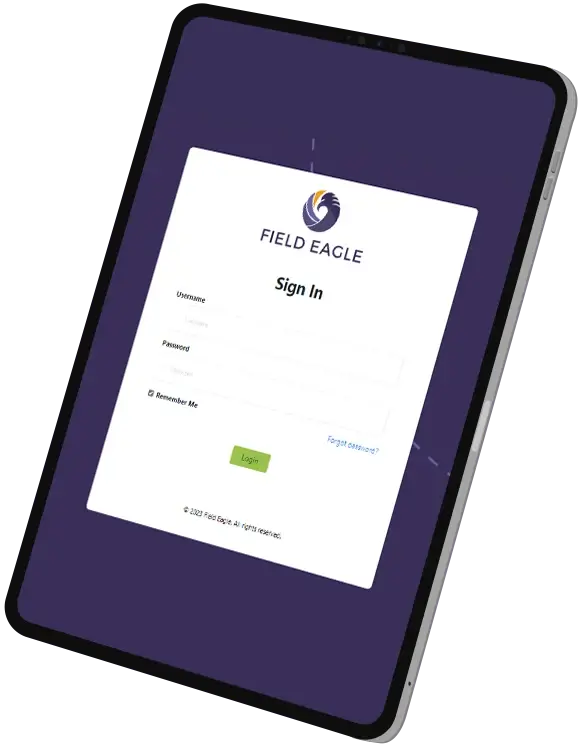Managing equipment, infrastructure, and assets effectively is critical for industries like manufacturing, construction, energy, and oil & gas. Poor asset management leads to unexpected failures, increased downtime, and costly repairs.
Traditional asset lifecycle management relies on manual tracking, spreadsheets, and paper-based inspections, which often result in errors, missed maintenance schedules, and compliance risks. Digital inspection software provides a centralized, automated solution to optimize asset performance, extend lifespans, and improve maintenance strategies.
In this article, we explore the importance of asset lifecycle management, the challenges of manual tracking, and how digital inspection software like Field Eagle helps businesses streamline maintenance, prevent failures, and maximize ROI.
The Importance of Asset Lifecycle Management
Asset lifecycle management involves tracking, maintaining, and optimizing equipment performance from acquisition to disposal. Effective management ensures:
- Minimized downtime and improved operational efficiency.
- Extended asset lifespan, reducing capital expenses.
- Lower maintenance costs through predictive and preventive strategies.
- Regulatory compliance with industry safety and inspection requirements.
- Better resource allocation with data-driven decision-making.
Challenges of Manual Asset Tracking
Many companies still rely on manual methods to manage their assets, leading to significant inefficiencies. Here are the most common challenges:
1. Missed Maintenance Schedules & Unexpected Failures
Without an automated system, maintenance schedules are often overlooked or delayed, leading to unexpected equipment failures. This results in costly repairs, production downtime, and potential safety hazards.
✅ Solution: Digital inspection software automatically schedules maintenance, ensuring assets are serviced on time and reducing unexpected breakdowns.
2. Inaccurate Asset Records & Data Errors
Paper-based tracking or outdated spreadsheets often result in:
- Missing or duplicate asset records
- Human errors in maintenance logs
- Delayed updates on equipment status
✅ Solution: Cloud-based digital inspections keep real-time, accurate asset records with automated data entry, eliminating human errors.
3. High Costs Due to Reactive Maintenance
Many companies take a reactive approach—fixing assets only after they break. This leads to:
- Higher emergency repair costs
- Unplanned operational disruptions
- Shorter equipment lifespan
✅ Solution: Predictive and preventive maintenance strategies powered by digital inspection software allow businesses to identify issues before failures occur, reducing costs and increasing efficiency.
4. Lack of Regulatory Compliance & Audit Readiness
Industries such as oil & gas, construction, and manufacturing have strict safety and compliance regulations. Manual record-keeping makes it difficult to:
- Provide accurate asset history for audits
- Demonstrate regulatory compliance
- Ensure corrective actions are properly documented
✅ Solution: Field Eagle’s audit-ready reporting and compliance tracking ensure businesses stay ahead of regulations with automated documentation and standardized inspection protocols.
Benefits of Digital Inspection Software for Asset Lifecycle Management
1. Proactive Maintenance & Risk Reduction
- Automated alerts remind teams of scheduled inspections.
- Early issue detection prevents costly failures.
- AI-driven predictive insights optimize asset performance.
2. Real-Time Data & Centralized Asset Records
- Cloud-based storage ensures easy access to asset history.
- Mobile-friendly inspections allow real-time data capture in the field.
- Barcode & RFID scanning streamline asset tracking.
3. Cost Savings & Extended Asset Lifespan
- Data-driven decision-making helps prioritize asset investments.
- Lower maintenance costs through predictive strategies.
- Longer equipment lifespan with optimized maintenance schedules.
Case Study: Improving Asset Lifecycle Management with Digital Inspections
A leading energy company transitioned from manual asset tracking to Field Eagle’s digital inspection software, resulting in:
- 30% increase in asset reliability through proactive maintenance.
- 40% reduction in unplanned downtime, improving operational efficiency.
- 20% decrease in overall maintenance costs, saving thousands annually.
By implementing automated inspections and real-time asset tracking, the company eliminated inefficiencies, improved compliance, and maximized asset performance.
Conclusion
Effective asset lifecycle management is essential for minimizing downtime, optimizing performance, and reducing operational costs. Digital inspection software provides the tools needed to track, maintain, and extend asset lifespans efficiently.
Businesses that embrace automated inspections and predictive maintenance will see significant improvements in efficiency, cost savings, and compliance adherence.







